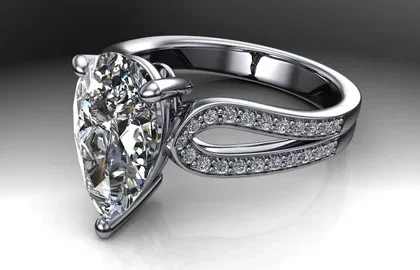Silk sarees have long been the epitome of elegance, tradition, and timeless beauty in Indian fashion. Passed down through generations, these masterpieces are not just garments—they’re a reflection of India’s rich cultural heritage. Over the years, silk saree designs have evolved, blending traditional motifs with contemporary trends. Today, they cater to a global audience, offering something for every taste, occasion, and region.
The Legacy of Silk Sarees
Silk, often referred to as the “queen of textiles,” has been woven into Indian culture for centuries. From temple rituals to bridal trousseaus, silk sarees hold a special place in every Indian woman’s wardrobe. Whether it’s a Kanjeevaram from Tamil Nadu, a Banarasi from Uttar Pradesh, or a Paithani from Maharashtra, each type of silk saree design narrates a unique story of craftsmanship and regional flair.
The traditional appeal of silk sarees lies in their luxurious texture, lustrous sheen, and intricate embroidery or motifs. While earlier designs focused heavily on religious and mythological themes, modern silk saree designs also explore floral patterns, geometric shapes, abstract art, and minimalistic elegance.
Popular Types of Silk Saree Designs
1. Kanjeevaram Silk Sarees
Known as the “South Indian bridal saree,” Kanjeevaram sarees are famed for their thick silk fabric and rich zari work. These sarees usually feature temple borders, checks, stripes, and floral buttas. The designs often depict South Indian mythology, peacocks, elephants, and celestial figures woven with golden threads.
2. Banarasi Silk Sarees
Originating from Varanasi, Banarasi sarees are distinguished by their opulent brocades and Mughal-inspired motifs. You’ll often find intricate floral patterns, foliate motifs, and architectural influences in their designs. The heavy gold and silver zari work makes them a favorite for weddings and grand occasions.
3. Paithani Silk Sarees
From Maharashtra, Paithani sarees are characterized by vibrant colors, peacock and parrot motifs, and oblique square borders. The pallu (saree end) usually features intricate tapestry-style designs, making every piece a work of art.
4. Chanderi Silk Sarees
Lightweight and airy, Chanderi silk sarees are ideal for formal wear and summer events. They are typically adorned with fine motifs like coins, peacocks, and geometric patterns, often woven in pastel shades with gold or silver detailing.
5. Tussar and Raw Silk Sarees
Known for their rustic charm and earthy texture, Tussar and raw silk sarees come in muted tones with subtle designs. Often block printed or hand-painted, they are perfect for those who prefer understated elegance over opulence.
Modern Trends in Silk Saree Designs
As fashion evolves, silk saree designs are witnessing a blend of classic and contemporary styles. Designers are experimenting with unconventional colors like teal, grey, mint green, and mustard yellow, moving away from the typical reds and maroons.
Fusion sarees that combine silk with other fabrics like organza, net, or chiffon are becoming popular. These blends offer the richness of silk with the flowy, lightweight nature of modern materials, catering to younger audiences who want tradition with comfort.
Minimalist designs featuring plain silk sarees with bold borders or contrast pallus are also making a mark. These pieces can be styled in multiple ways, offering versatility for both festive and semi-formal occasions.
Additionally, digital prints, embroidered patterns, and sequins are being integrated into silk saree designs to appeal to global fashion sensibilities.
How to Choose the Right Silk Saree Design
When selecting a silk saree, consider the occasion, your body type, and personal style:
- For weddings or festivals: Opt for traditional formals for women like Kanjeevaram or Banarasi with heavy embroidery and bright colors.
- For corporate events or semi-formal gatherings: Choose lightweight silk sarees like Chanderi or Tussar with subtle prints or motifs.
- For daily wear or casual outings: Soft silks and printed designs in muted colors offer comfort without compromising on style.
- For petite figures: Smaller motifs and thin borders add proportion, while tall women can carry off bold patterns and wide borders with ease.
Accessorizing also plays a major role in enhancing your silk saree look. Temple jewelry, antique gold pieces, or modern statement accessories can dramatically uplift the ensemble depending on the occasion.
Caring for Your Silk Sarees
To preserve the sheen and structure of your silk sarees, proper care is essential:
- Always dry-clean silk sarees to maintain their texture and color.
- Store them in muslin cloths or cotton bags to avoid moisture damage.
- Do not hang silk sarees for extended periods—fold and change the folds occasionally to prevent fabric stress.
- Keep them away from direct sunlight to prevent fading.
Conclusion
Silk saree designs continue to be a beautiful blend of age-old tradition and contemporary artistry. With endless styles, colors, and regional varieties to choose from, they remain a beloved choice for women across the globe. Whether you’re donning one for a special occasion or simply want to make a graceful style statement, a silk saree never goes out of fashion. It’s not just attire—it’s a legacy wrapped in elegance.





